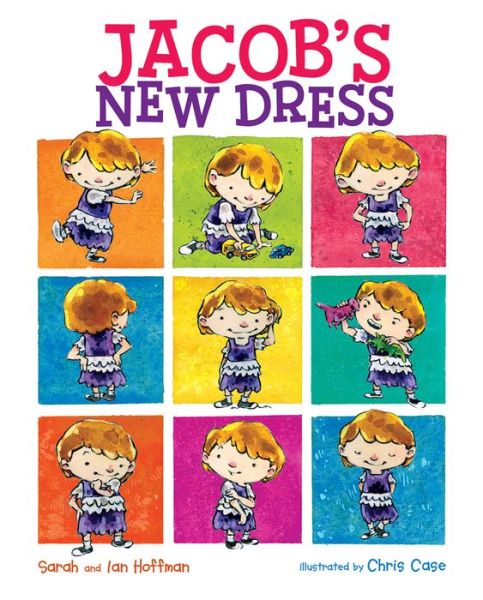Age: 3-5 years
Genre: picture book
The title of
this book caught my attention when I saw it on the shelf at the library. I used
to teach 2-3 year olds, and the boys in my class loved wearing dresses for make
believe time. I’m not sure how their parents felt about it, but it’s all part
of exploring their world. When I saw Jacob’s New Dress, I thought, Ooo, a picture book about boys who like to
dress like girls! So I read the story and found a unique and relevant tale
that takes a nurturing and non-judgmental look at a boy who likes to wear
dresses.
Jacob is a
preschool boy who loves to play dress-up with his friends. Though he could
dress up as anything, including the more traditional boy costumes of a dragon,
firefighter, or cowboy, he chooses a “sparkly pink dress” and a crown. His
classmate, Christopher, has a problem with this and asks Jacob, “Why do you
always wear the girl clothes?” Luckily
for Jacob, he has an understanding teacher, Ms. Wilson, who steps in and says
Jacob can use his imagination to dress up however he wants. When Jacob gets
home, he talks to his mom and dad about wearing dresses. The next day Jacob
creates a dress for himself out of a towel and belt, and his mother reluctantly
lets him wear it to school. But Jacob gets teased again. When he tries to talk
to his mom about it, he feels like he can’t breathe waiting to see what she
will say. His mom tells him, “There are all sorts of ways to be a boy,” and
then helps him make his own real dress to wear whenever he wants.
Jacob’s New Dress tackles the issue of
gender nonconformity in a realistic way. The authors don’t shy away from the
fact that Jacob gets teased for his choices, but they surround him with adults
who are able to keep an open mind and be supportive. The authors of the book
have their own gender-nonconforming son, Sam, and their expertise in the subject
matter shines through and feels real. Jacob’s New Dress shares an important
story that many children could probably relate to, whether they dress up sometimes
just for fun or every day. This book would be well-suited to being read in a
classroom setting where the teacher could talk to the children about the issues
raised in it.
Bibliographic
Information:
Hoffman,
Sarah & Ian. Jacob’s New Dress. Chicago,
IL: Albert Whitman & Company, 2014.

